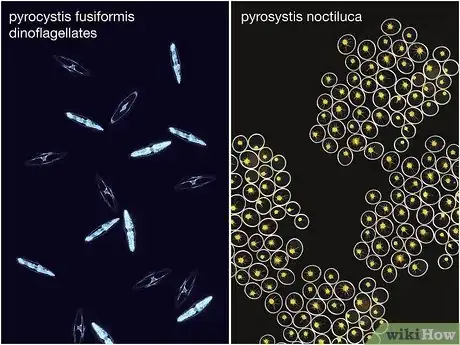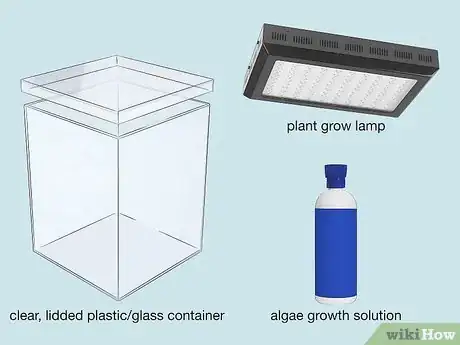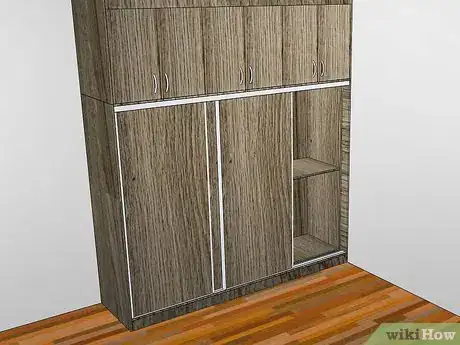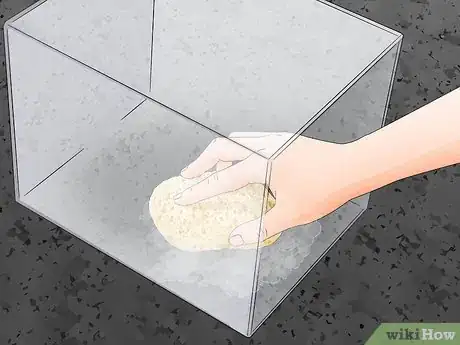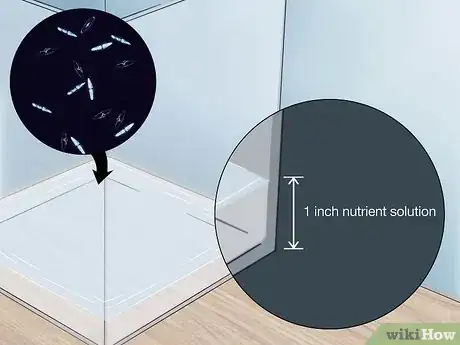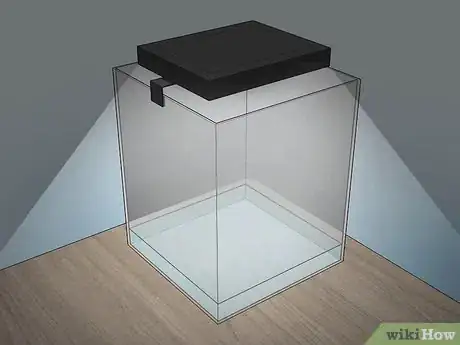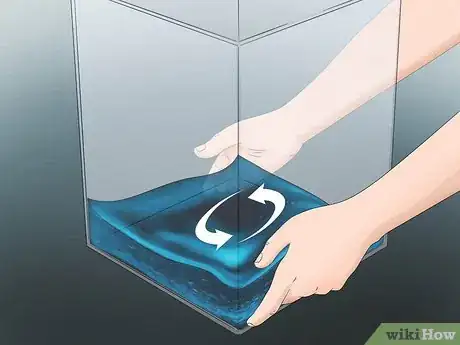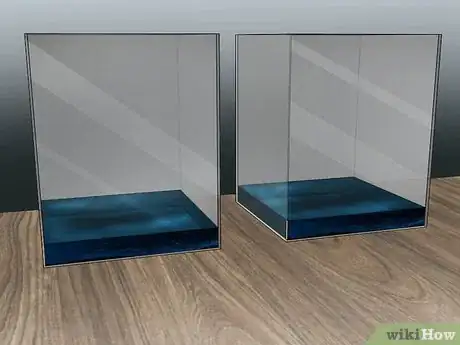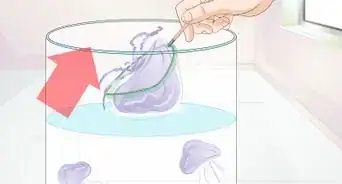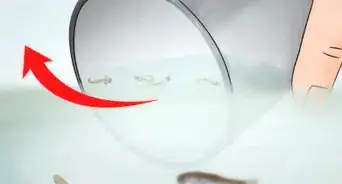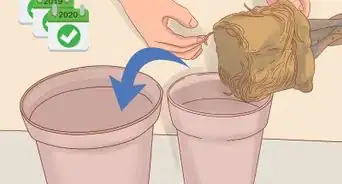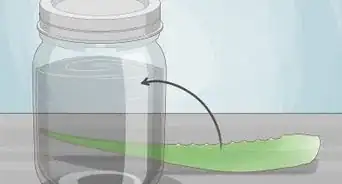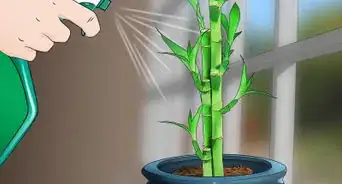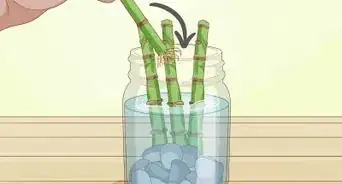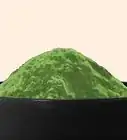wikiHow is a “wiki,” similar to Wikipedia, which means that many of our articles are co-written by multiple authors. To create this article, 29 people, some anonymous, worked to edit and improve it over time.
This article has been viewed 360,247 times.
Learn more...
Bioluminescence, which means "living light," occurs in fireflies, certain fungi and fish, and microorganisms like Dinoflagellates, a species of algae.[1] Dinoflagellates in marine environments can multiply rapidly with the right combination of sunlight and nutrients, and when the water around them is agitated their distinctive blue or green glow becomes visible. Since a natural Dinoflagellate "bloom" occurs only rarely, try growing them at home to experience the beauty of bioluminescence. Gather a few materials, set up the appropriate light and temperature conditions, and wait for nighttime to watch the algae sparkle and glow.
Steps
Preparing to Grow Bioluminescent Algae
-
1Choose a type of bioluminescence dinoflagellate. There are many species to choose from, but some are easier to see and produce brighter flashes than others. Starter cultures are available from online vendors and usually cost about $25.00.seafarms.com and carolina.com are excellent online sources for starter cultures or kits.
- Pyrocystis Fusiformis dinoflagellates are so large that the individual cells can be seen with the naked eye, and they are the hardiest and easiest type to grow.
- Pyrosystis Noctiluca are beautiful, but it is trickier to provide them with the right conditions they need to flourish.
- Pyrosystis Lunula tend to stick to the sides of the containers, and are more difficult to grow than other types of algae.
-
2Buy other materials to create the proper conditions for growth. Algae need plenty of light and nutrients to multiply in the ocean, and they need the same conditions to flourish at home.
- Buy a nutrient solution or algae growth solution. Find a natural solution made with real seawater rather than choosing a synthetic solution, which won't be as conducive to growth. Growth solutions are available online or at aquatic supply stores.
- Choose a clear, lidded container, either glass or plastic, in which to grow your dinoflagellates. It's important that the container be clear to let in a maximum amount of light.
- Consider buying a plant grow lamp so you'll be able to control the algal light exposure. These can be purchased at plant supply or hardware stores. A regular 40-watt light bulb in a household lamp will also work.
Advertisement -
3Find a place in your house to grow the algae. A closet might be a good option since you'll be able to control the light, but choosing a dark place isn't absolutely necessary. It's fine for algae to get natural sunlight during the day.
- Make sure the place you choose always remains at a moderate temperature. Cold or hot temperatures could prevent the algae from growing.
- The optimal temperature range for growing algae is between 68 and 75 degrees Fahrenheit (22 - 25 degrees Celsius).
Assembling the Equipment and Mixing the Algae Solution
-
1Wash and dry the container you're using. Make sure both the container and lid are completely clean and free of debris. If another substance remains in the container when you add the algae, it may affect the algae's growth.
- If you're using a heavy glass container that you know to be heatproof, place it in the oven for a few minutes after washing to sterilize it.
- Don't use excess soap when washing the container, since that could also affect the algae's growth.
-
2Pour one inch of nutrient solution and the entire algae culture into the container. Place the lid on the container to prevent the water from evaporating and causing the solution to get over saline, and to keep contaminants out.
- It is possible to grow algae in the container it was shipped in, which is usually a plastic beaker. Simply pour a few inches of the culture out, and add a few inches of growth solution.
- Before you mix the nutrient solution and algae culture, allow the two containers to sit at room temperature for an hour or two. Making sure that they are both the same temperature will prevent the culture from getting shocked by a temperature change.
- Don't allow the solution and culture to sit in the sun, as the heat may cause a lethal rise in temperature.
Growing the Algae and Watching it Luminesce
-
1Set up a light cycle. Dinoflagellates photosynthesize during the day, and to do so effectively they need twelve solid hours of light.[2] This can be achieved by allowing the algae to get natural sunlight or controlling the light carefully with a lamp inside a closet or dark room.
- If you use a lamp, it should be placed about three feet from the container. Do not place the light directly over the container; this will heat it up and kill the organisms inside.
- If you want the algae to luminescent predictably, it is necessary to keep them on a strict light schedule. Turn on the light at the same time in the morning and turn it off at the same time at night (you can use a light timer to help you). The algae's circadian rhythm will synchronize with the light schedule. They need a substantial amount of full spectrum light and a full dark cycle as well to thrive.
- It is possible to arrange a light schedule so that luminescence occurs during the day. This is useful if you are using it to teach children in a classroom. Set up the grow lamp to shine on the algae overnight, and keep it in a dark closet during the day.
-
2Stimulate the algae and watch it glow. Dinoflagellates flash when water or another substances stimulates them by pressing against their cell walls.[3] To watch them luminesce, pick up the container and gently swirl the water inside. If they received enough light during the day, they will begin to light up and flash.
- Don't shake the container too hard, as it will wear out the dinoflagellates and cause them to stop flashing more quickly.
- Don't shake the container too often, since this also causes dinoflagellates to become exhausted. They need a period of recovery after luminescing.
-
3Divide the algae into more containers. Over time, if the conditions are right, you will see the algae multiply. You can separate it into more containers and mix it with additional grow solution. The luminescence won't be as bright at first, since it will take a few weeks for the algae population to restore itself.
-
4Keep the algae for four to six months. Dinoflagellates usually expire after this period. Buy another culture, and consider experimenting with a different dinoflagellate this time.
Community Q&A
-
QuestionHow long will it take me to grow the algae at home?
 Community AnswerThe algae would come to you alive already. If you are asking how long until they start to luminesce, that is usually within a day or two of the proper conditions. If the question is when will they divide so you have more, it depends on the species, but it is usually one to two weeks.
Community AnswerThe algae would come to you alive already. If you are asking how long until they start to luminesce, that is usually within a day or two of the proper conditions. If the question is when will they divide so you have more, it depends on the species, but it is usually one to two weeks. -
QuestionHow can I get them to reproduce so I can keep them continuously?
 Community AnswerFeed them purchased nutrient solution, fresh saltwater from sea salt and give them light, and they will multiply and grow.
Community AnswerFeed them purchased nutrient solution, fresh saltwater from sea salt and give them light, and they will multiply and grow. -
QuestionCan I dump bioluminescent algae into my swimming pool to make the water and sides glow at night?
 Pierre PeensCommunity AnswerYour pool water will most certainly kill the algae - which is the sole purpose of chlorine/salt chlorinated pools. You're able to grow the algae on a large scale but in a super-controlled environment. A swimming pool is open to all weather conditions, including very high and low temperatures. Your pool pump and filter also will kill the algae.
Pierre PeensCommunity AnswerYour pool water will most certainly kill the algae - which is the sole purpose of chlorine/salt chlorinated pools. You're able to grow the algae on a large scale but in a super-controlled environment. A swimming pool is open to all weather conditions, including very high and low temperatures. Your pool pump and filter also will kill the algae.
Things You'll Need
- Starter Culture of Bioluminescent Algae
- Nutrient growth solution
- Clear glass or plastic container with lid
- Fluorescent Lamp (up to 24" long is sufficient)
- 24-hour lamp timer, if desired
References
- ↑ https://www.annualreviews.org/doi/full/10.1146/annurev-marine-120308-081028
- ↑ http://www.lifesci.ucsb.edu/~biolum/organism/dinohome.html
- ↑ http://www.lifesci.ucsb.edu/~biolum/organism/dinohome.html
- ↑ Extra growth solution: http://www.carolina.com/product/alga-gro+seawater+medium%2C+1+qt.do (or go to www.carolina.com and enter the item#)
- ↑ Experiment variables: http://siobiolum.ucsd.edu/Biolum_demos.html
- Algae food source
About This Article
To grow bioluminescent algae at home, start by ordering a culture online. You’ll also want to buy algae growth solution and a clear lidded container. Make sure your container is clean, and select an area to grow the algae where you can give them 12 hours of light per day using either a grow light or a regular 40-watt bulb. Finally, mix an inch of the nutrient solution with the entire algae culture and begin to apply the light cycle, and watch them grow! For tips on how to care for your algae as it multiplies and grows, read on!
